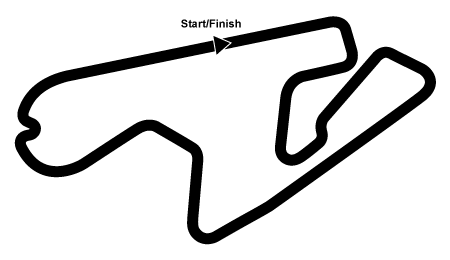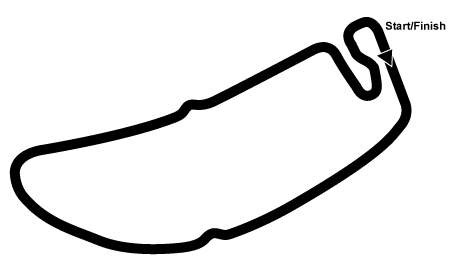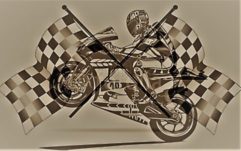
The second half of the 1989 World Superbike Championship
There were numerous surprises in the first half of the second Superbike World Championship. One of them was Davide Tardozzi, who had no World Championship points for the first 5 races of the season and after 6 of 11 laps was third overall in the previous year and was only 17th in the World Championship. Raymond Roche was able to surprise positively on the Ducati. At the latest after his one-two victory by Brainerd (USA), the Frenchman was one of the favorites for the title. Below is the intermediate result of the World Championship with the first 17 drivers before the series in Japan went into the 7th round.



The 7th round of the 1989 season in Japan

Fred Merkel’s low point of the season
After the race in southern France, it went overseas for the second time in the 1989 World Cup. This time, however, to the country of origin of most of the bikes from the starting field to Sugo. With Doug Polen (Suzuki) the first run was won by a wildcard pilot and compatriot of Merkel, who finished only 16th for the first time in the season without any points. One should see and hear a lot from Doug Polen later in WorldSBK. The podium was completed by the two Australians Michael Dowson (Yamaha) and Rob Phillis in a Kawasaki. The best European was Giancarlo Falappa on Bimota ahead of the two Japanese Arata (Yamaha) and Iwahashi (Honda).



The second run of Sugo
After the second run in Austria, there were also rain races in Sugo. This time even the same in both runs. This time the Australian Dowson won ahead of Iwahashi, Falappa, Polen and the two Japanese Sohwa, Phillis and the New Zealander Aaron Slight (all Kawasaki). With 12th place, Merkel only had 4 World Cup points as the result of her trip to Japan. The American could be happy, Mertens, Pirovano and Roche didn’t get off much better. With 8 points ahead of Mertens as the new World Championship runner-up, Fred Merkel arrived in Hockenheim in mid-September, where the eighth of 11 rounds took place.



The 8th World Championship round in Hockenheim



A total of 91 participants had registered for the German round. With his second double victory after Brainerd (USA), Sunday in Baden-Württemberg was his next double triumph for Ducati rider Raymond Roche. The world championship leader and reigning world champion Merkel did not get past places 4 and 8. Things went much better for Mertens with places 2 and 3, who was the new World Cup leader with 195 points. Fred Merkel followed with 193 points in front of Raymond Roche (172) and Fabrizio Pirovano (165).


The last European station in Sicily for World Cup round 9

Why Enna-Pergusa of all places was chosen as the venue for the first Italian round of the Superbike World Championship is still astonishing today. There was no Italian run last year, but tracks like Monza, Misano or Imola would have been more obvious. In addition, they were much easier to reach for the many participants from Europe than the route around the only natural lake in Sicily. Although his opponents won the two races in the fight for the title, Fred Merkel was again the most consistent with two 2nd places. Roche did not see the checkered flag in the first race and Mertens did not get past 7th place in the second. Merkel’s narrow lead over Mertens was two points before the trip to Australia.




The penultimate round of the World Championship in Australia


For the 2nd and last time on the track that was unworthy of the World Cup
Oran Park hosted the Superbike World Championship for the last time. Located southwest of Sydney, this course was to be replaced by the Phillip Island Circuit the following year. For Merkel and the Europeans, as at the season finale in New Zealand, there was a risk of being overshadowed by the many strong drivers from Down Under. As in Japan, this could also have a strong impact on the World Cup decision. In the previous year Michael Doohan had won both world championship races on a Yamaha. Mick, as he called himself shortly afterwards for the sake of simplicity in the Grand Prix scene, was no longer in danger in 1989. The Australian from Brisbane already competed in the 500cc World Championship this year.

The hour of the local heroes
The track was still damp when the first race started, but it was noticeably drying up. Promptly, the big hour for the local drivers struck again in the first race at Oran Park. With Peter Goddard (Yamaha) ahead of Rob Phillis (Kawasaki), two local heroes won ahead of Fabrizio Pirovano on a Yamaha and Raymond Roche (Ducati) as the best Europeans. Stéphane Mertens finished eighth and the results of the reigning world champion and World Cup leader Merkel remained in eleventh place even more modest.


The second run in Oran Park
Roche made it to the podium again in the second race with his Ducati behind the Australian Michael Dowson (Yamaha). Mertens was fourth this time ahead of Merkel and New Zealander Aaron Slight. This should often make headlines in the WorldSBK in the coming years. Again the situation at the top had changed again and before the final in New Zealand the Belgian Mertens was leading again with 245 points ahead of US boy Merkel with 242 and Roche (222). Fabrizio Pirovano had only a theoretical chance of winning the title with 208 points.



The decision for the world title in Manfeild

As in the previous year, the Superbike World Championship in 1989 remained extremely exciting until the very end. Again, Fred Merkel was only in second place when it went back to Manfeild in New Zealand for the World Cup final. At 3.114 km (1.934 miles), this route was also much too short compared to today’s usual courses. Englishman Terry Rymer (Yamaha) surprisingly won ahead of local hero Aaron Slight (Kawasaki) and Fred Merkel as the best Honda rider. Behind them finished the Australians Michael Dowson (Yamaha) and Rob Phillis (Kawasaki) as 4th and 5th. Because Stéphane Mertens crashed with his Honda in the 12th of 33 laps, Merkel suddenly had match point again, to put it in tennis jargon. Now the American was leading with 12 points ahead of the Belgian.




The last World Championship round brought the decision
Stéphane Mertens now absolutely had to win the second run in order to maintain his title chances. However, due to the points regulation at the time, Fred Merkel was only allowed to finish eighth in this case. It was not until 1995 that the winner received 25 points, while at that time a win only earned 20 points. The Belgian drove like hell in the last race of the season, but it didn’t help him in the end. Because his rival Merkel crossed the finish line 3 seconds behind runner-up Malcolm Campbell (Honda), he had become world champion for the second time in a row. With two victories in 1989 and now three, it was enough for the American to win the first two titles of the still young series-based World Championship.



A small calculation example – according to today’s calculations
We took the liberty of playing a little numbers game and determining what the World Cup would have looked like according to today’s point system (which has been in use since 1995). Lo and behold, Fred Merkel can lean back and relax. The three-time AMA Superbike Champion in his home country would have been 3 points ahead of Mertens in the final World Championship even after today’s counting method with 298 points. This was not always the case in earlier years, as examples from the first decades of the motorcycle world championship show, see our history tab about riders like H. G. Anscheidt in 1964.

The ranking of the second Superbike World Championship 1989 – P1 to 46

Ranks 47 to 99 – the longest ranking list in WorldSBK history

WorldSBK Season 1990: http://www.motoracers.eu/wsbk-history-part-5/?lang=en

No Comments Yet